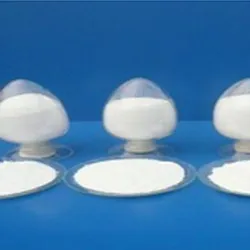
Understanding the Role of Sodium Bicarbonate as an Acid Neutralizer in Various Applications
Understanding Sodium Bicarbonate and Its Acidic Interactions
Sodium bicarbonate, commonly known as baking soda, is a versatile compound with the chemical formula NaHCO₃. Predominantly used in cooking, baking, and even cleaning, this white crystalline powder has a wide array of applications due to its unique properties. One of the most interesting aspects of sodium bicarbonate is how it interacts with acids, leading to various chemical reactions that can be both practical and educational.
When sodium bicarbonate comes into contact with an acid, a neutralization reaction occurs. This reaction produces carbon dioxide gas, water, and a salt. The general equation for this reaction can be expressed as follows
Understanding Sodium Bicarbonate and Its Acidic Interactions
In this equation, HA represents any acid, such as hydrochloric acid (HCl) or acetic acid (found in vinegar). The release of carbon dioxide gas is often observed as bubbling or fizzing, a characteristic feature that makes this reaction particularly useful in various applications beyond the kitchen.
sodium bicarbonate acid

One of the most popular uses of sodium bicarbonate's reaction with acids is in baking. When a recipe calls for an acidic ingredient, such as yogurt, buttermilk, or vinegar, sodium bicarbonate serves as a leavening agent. The carbon dioxide produced during the reaction helps dough rise, resulting in the light and fluffy texture we associate with baked goods. This chemical reaction is crucial for the culinary arts, highlighting the importance of understanding the interplay between sodium bicarbonate and acids.
Beyond baking, sodium bicarbonate has significant applications in the field of medicine. It is often used as an antacid to relieve heartburn and indigestion. When an individual consumes sodium bicarbonate, it reacts with excess stomach acid (hydrochloric acid), neutralizing it and alleviating discomfort. This makes sodium bicarbonate a handy household remedy, but it should be used cautiously and in moderation, as excessive consumption can lead to metabolic alkalosis, a condition where the body's pH becomes too alkaline.
Additionally, sodium bicarbonate is used in various scientific and industrial applications. In laboratories, it is often employed as a buffering agent to maintain a stable pH in chemical reactions. The ability of sodium bicarbonate to function well as a buffer makes it invaluable in many biological and chemical experiments. Moreover, in water treatment processes, sodium bicarbonate can help alleviate acidity, making bodies of water more conducive to aquatic life.
The reaction between sodium bicarbonate and acids produces not only carbon dioxide but also raises the significance of understanding pH levels in various environments. For example, in agriculture, understanding the pH balance in soil is crucial for optimal plant growth. The acid-neutralizing properties of sodium bicarbonate can be harnessed to improve soil conditions, enhancing crop yields and sustainability.
In conclusion, sodium bicarbonate is more than just a common ingredient in our kitchens; it plays a critical role in cooking, medicine, and various scientific applications. Its reactions with acids exemplify the fascinating chemistry that underpins many daily processes, from the rise of our baked goods to the relief of digestive discomfort. As we continue to explore and understand the properties of sodium bicarbonate, we can further appreciate its contributions to both our health and the environment. Whether you’re baking a cake or neutralizing stomach acid, sodium bicarbonate proves to be an essential compound whose versatility is unparalleled.
-
Pure Sodium Dichloroisocyanurate Dihydrate | Powerful DisinfectantNewsAug.29,2025
-
Industrial Chemicals: Quality & Purity for Every IndustryNewsAug.28,2025
-
Nitrile Rubber Honoring Strict Production StandardsNewsAug.22,2025
-
Aspartame Ingredients Honoring Food Safety ValuesNewsAug.22,2025
-
Fertilizer for Balanced Plant NutritionNewsAug.22,2025
-
Cyanide Gold Processing with High Purity AdditivesNewsAug.22,2025
-
Formic Acid in Textile Dyeing ApplicationsNewsAug.22,2025
Hebei Tenger Chemical Technology Co., Ltd. focuses on the chemical industry and is committed to the export service of chemical raw materials.
-

view more DiethanolisopropanolamineIn the ever-growing field of chemical solutions, diethanolisopropanolamine (DEIPA) stands out as a versatile and important compound. Due to its unique chemical structure and properties, DEIPA is of interest to various industries including construction, personal care, and agriculture. -

view more TriisopropanolamineTriisopropanolamine (TIPA) alkanol amine substance, is a kind of alcohol amine compound with amino and alcohol hydroxyl, and because of its molecules contains both amino and hydroxyl. -

view more Tetramethyl Thiuram DisulfideTetramethyl thiuram disulfide, also known as TMTD, is a white to light-yellow powder with a distinct sulfur-like odor. It is soluble in organic solvents such as benzene, acetone, and ethyl acetate, making it highly versatile for use in different formulations. TMTD is known for its excellent vulcanization acceleration properties, which makes it a key ingredient in the production of rubber products. Additionally, it acts as an effective fungicide and bactericide, making it valuable in agricultural applications. Its high purity and stability ensure consistent performance, making it a preferred choice for manufacturers across various industries.





